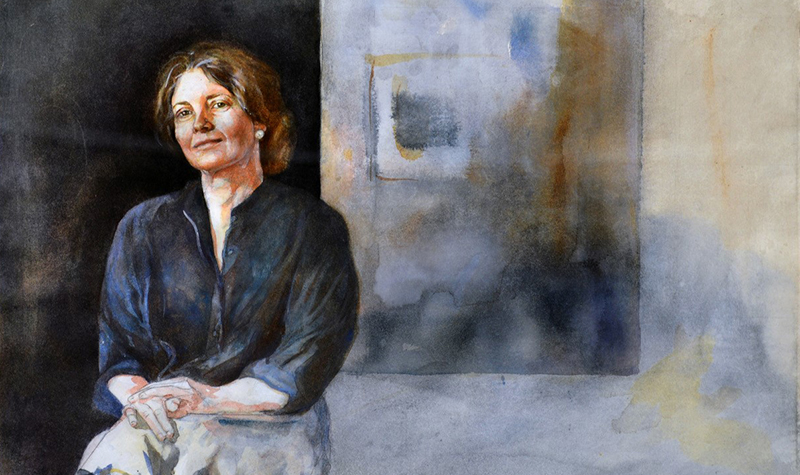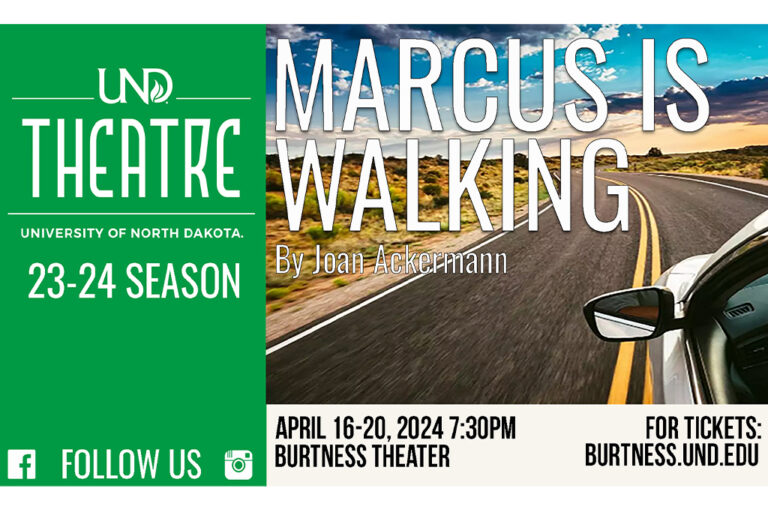N.D. Museum of Art founding director to retire after 50 years
Laurel Reuter started museum in Memorial Union, moved it to former women’s gym, made it region’s cultural center

Editor’s note: The following article was written by the staff of the North Dakota Museum of Art.
Fifty years ago, North Dakota Museum of Art Director Laurel Reuter embarked upon a journey that would take her from Tokio, N.D., the small Spirit Lake Reservation village where she grew up, to the University of North Dakota where she studied literature coupled with the meager available art history courses at the time. Her quest to see as much art as she could took her across North America and Europe to South Africa, Japan, Tiananmen Square, South America, and the far reaches of Canada and Iceland in search of exceptional art to introduce to her growing audience and the fledgling museum she would dedicate her life to building.
Earlier this month, Laurel is announced her forthcoming retirement.
According to Reuter, “I dedicated my life to creating a vibrant art world on the plains of eastern North Dakota. I was just a kid in the English Department at UND when the director of the Student Union asked if I wanted a part-time job keeping a student gallery open on the top floor. It was there I began to think about space, installation, how does a gallery work.
“With full support from the Union director and assistant director, I began.”
“In 1973, I appointed myself the director, and no one cared. I remember it as an exciting time. With the help of my very small staff, we grew the Student Union gallery beyond our expectations. We organized exhibitions by Kenneth Patchen.”
The catalog was Laurel’s thesis, the first creative thesis in the English Department. More solo shows followed by Larry Clark (1973), Fritz Scholder (1974), Ed Ruscha (1975), David Gilhooly (1978), Frank Gohlke (1979 — organized by New York’s Museum of Modern Art), Sol LeWitt (1980), N. Scott Momaday (1981 — his first museum exhibition), Jaune Quick-to-See Smith (1981 — her first museum exhibition), and a two-person exhibition by Elmer Bischoff and David Parks (1986).
Laurel, with help from a legion of friends, moved to a new space in 1989 (the former women’s gymnasium on the UND campus), with inaugural exhibitions by Peter Dean and Barton Benes, who ultimately left the contents of his New York apartment to the Museum to be recreated as a contemporary period room (2012). In 1992, when he was just a college student in South Dakota, Reuter gave Chinese artist Xu Bing his first Museum exhibition. They remain friends to this day.
In 1997, the Museum survived the great flood of the Red River Valley and became the place where churches met, community members gathered, and recovery events were planned. In 2002, Reuter organized the exhibition “Re-imagining New York,” highlighting artists who lost their studios in the terrorist attacks on the Twin Towers in 2001.
In 2004, she opened “The Disappeared,” an exhibition about those who disappeared under the military dictatorships and civil wars in South America. The Exhibition toured to five places in South and Central America, and five sites in the U.S. New York Times critic Holland Cotter reviewed The Disappeared, writing, “It is scheduled to travel through South America for three years and has a bilingual catalog that is a work of art in itself. From Ms. Reuter’s stunning essay to the supplementary material, it is a total-immersion experience.
“And why is it that an on-the-road exhibition from a small museum in the Midwest is the most potent show of contemporary art, political or otherwise, in town? All I can say is that curators in our local museums should pay a visit and ask themselves that question.” (June 6, 2007).
The show went on to win many prizes and recognitions, including being named one of Newsday’s Top 10 art events in 2007 in New York City.
As the Museum’s mission statement lays out, “we have come to value the arts because they make our hearts wise — the highest of human goals. Therefore, in the most difficult of times, and in an environment that might be perceived as alien to the visual arts, we propose to build a world-class museum for the people of the Northern Plains.”
Reuter states, “I will go forward knowing we have done this to the best of our abilities. I will depart the Museum knowing I have left a fully capable staff entrenched in creating an environment dedicated to equal participation in the arts — be it camps for children, concerts for those who enjoy Blues, Folk, or Classical, or exhibitions not seen in this part of the world.”
Growing up on the Spirit Lake Sioux Reservation in east-central North Dakota, Reuter was rarely exposed to the arts, except for her aunt and great-aunt’s landscape paintings and the regalia and paintings of the local Sioux people where she lived. Laurel states, “These enriched my understanding of what the arts were. Thus, I unknowingly dedicate my life to ensuring the arts flourished as wide and as far as I possibly could.”
Brian Larson, North Dakota Museum of Art Board Chair said, “Laurel Reuter has given the people of North Dakota a priceless legacy. We will be forever indebted to her for her vision, courage, and leadership.”
*****
The North Dakota Museum of Art Board of Trustees and the North Dakota Museum of Art Foundation, with the support of Reuter, has established the Laurel Reuter Director’s Fund, an investment fund dedicated to carrying out her vision and dedication to contemporary art on the Plains, Native American initiatives, commissions, publications, and the continued communication between Museum audience and supporters as well as national and international artists. More details to follow.
A national search for Reuter’s successor is underway. Her retirement will take place after a new director is in place.
*****
A quote from a Cynthia Lindquist, dedicated collaborator and friend.
“The word Dakota means ally or friend and maske (ma sh ke) is sister-friend. Laurel Reuter has been a true sister friend and ally, and I am honored to know her.
“Laurel has brought artists and artistry into the fold for the North Dakota Museum of Art, and in doing so, she has impacted lives. Having grown up in Tokio, N.D., which is on the Spirit Lake Dakota reservation, we like to claim Laurel as one of ‘ours’. She is a brilliant collaborator, partner with great insight and vision. Laurel exemplifies and practices Dakota values of compassion, fortitude, and generosity. She has always helped when asked and she does not seek the limelight but prefers to bring forward those who speak via art. I have learned and grown with her leadership skills through our projects.
“Pidamaya (thank you) maske! Mitakuyapi owasin … all my relations.”
Cynthia Lindquist, President
Śuñka Wakañ Wicahpi Wiñ … Star Horse Woman
Cankdeska Cikana Community College


